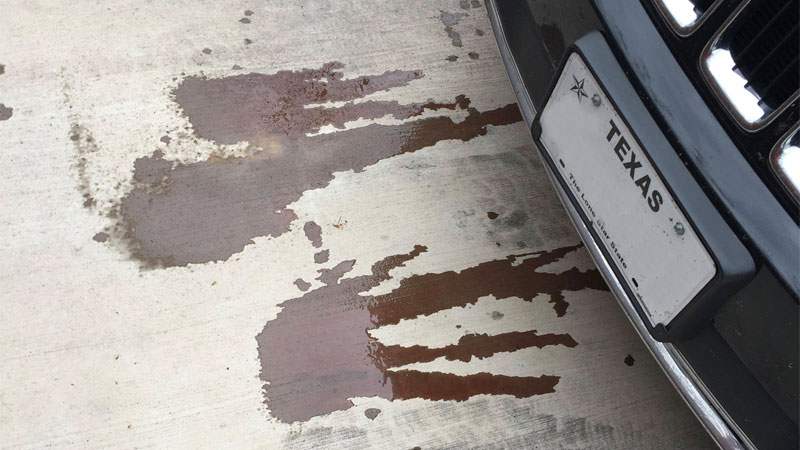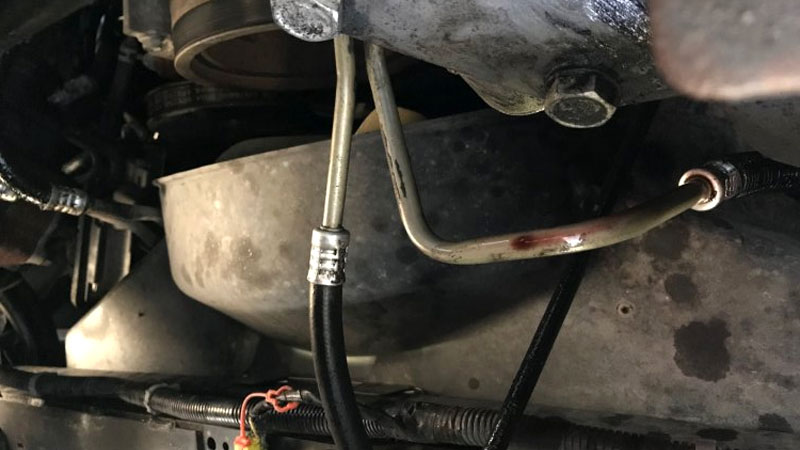A vehicle’s transmission is extremely vital to its overall operation, ultimately facilitating the delivery of engine-produced power to a vehicle’s drive wheels.
Luckily, most of today’s transmissions are rather hearty by design, often lasting for the entire service life of a vehicle itself. However, achieving this level of longevity requires timely transmission maintenance.
One of the most important aspects of transmission maintenance centers around ensuring that a transmission’s fluid level is maintained at optimal levels. While this is typically a rather straightforward matter, things become far more difficult when a leak of one type or another takes place.
In order to minimize hardships associated with a leaking transmission, one must first identify the source of this leak, before ultimately remedying the issue at hand. This, in turn, requires a sharp eye, and keen attention to detail.
Read on to learn more about how to tell if your vehicle’s transmission is leaking, as well as how to address such issues, should they arise in the future.
See Also – 9 Types of Fluids That Could Be Leaking
How to Identify a Transmission Fluid Leak
The most obvious sign of a transmission fluid leak is the sudden appearance of a fluid puddle beneath a vehicle when parked for extended periods of time. The fluid within this puddle will appear to be red or light brown in color, and will typically appear somewhat thinner in viscosity than engine oil.
Depending upon the layout of the vehicle in question’s engine/transmission combo, it might also be possible to determine if this puddle has originated in the vicinity of the transmission itself.
On FWD vehicles, this puddle will be located on one side of the engine bay or the other, opposite the location of the engine. On RWD vehicles, the transmission is located directly to the rear of the engine.
Any Other Signs of a Leak?
Aside from a puddle of fluid beneath a vehicle, other signs of a probable transmission fluid leak include transmission “slipping” or delayed shifts. Conditions of this type generally result from excess fluid loss, which has critically reduced a transmission’s fluid level.
In such cases, it is imperative to expedite the diagnosis and repair process, as permanent damage can result in short order.
A burning chemical-like odor also tends to be noticeable in the event of major transmission fluid leaks. This results whenever leaking fluid coats under-carriage exhaust components, thereby leading to significant burn-off. The more substantial a leak, the more noticeable symptoms of this type are likely to become.
What’s Causing the Leak?
Transmission fluid leaks can result from a number of critical system failures, some of which tend to be more severe in nature than others. Understanding these potential causes can prove extremely valuable when attempting to isolate and repair a transmission leak in the most expedited fashion possible.
The following are several of the most common sources of transmission fluid leaks.
1. Damaged Cooling Lines
Most transmissions utilize a specialized cooler, much like a radiator, to keep transmission fluid temperatures in check. Fluid is transferred to and from this cooler via specialized likes.
Unfortunately, with normal wear and tear, these lines can begin breaking down, thereby causing a significant transmission fluid leak.
2. Deteriorated Gaskets
Transmissions typically employ the use of gaskets to prevent fluid loss, most notably at the transmission fluid pan. Nonetheless, even the heartiest of gaskets deteriorate with time and prolonged heat exposure, inevitably leading to one or more leaks.
Remedying such concerns requires replacing the compromised gasket in question.
3. Hardened Seals
Aside from gaskets, transmissions also feature various seals, designed to keep fluid in, and debris out.
Perhaps the best example of this principle is a transmission’s output shaft seal. Though relatively durable, rubber output shaft seals tend to dry and harden with time, often leading to significant leaks.
4. Compromised Torque Convertors
Automatic transmissions utilize specialty designed torque converters, also known as viscous couplers.
Contained within a transmission’s torque converter is a significant amount of transmission fluid. This fluid can be lost if a torque convertor’s seals fail, or housing cracks.
Can You Continue Driving?
Driving for extended periods with a transmission fluid leak is never advised. This is due to the fact that it takes only minutes for a transmission starved of fluid to become significantly damaged when in operation.
This, most certainly, is not a risk worth taking. Repairing a transmission fluid leak is always cheaper than overhauling a transmission that has not been adequately lubricated.
Even minor transmission leaks can become far more severe in relatively short order. This lends little credibility to the notion that little harm can come from driving with a transmission leak that is minor in scope.
A leak that bears little consideration on one particular day, can spell disaster for your transmission the next.
In any event, it is important to fix any transmission leak as soon as possible. Doing so could quite possibly save your transmission from incurring extensive, and often condemning damage.
If you do not feel comfortable tackling such repairs yourself, an appointment with a trusted automotive service center should be scheduled at the first available opportunity.
Cost to Fix a Transmission Fluid Leak
The cost of fixing a transmission leak can vary greatly depending upon a number of factors. The most significant of these factors include the source of the leak in question, the type of model of the vehicle that is to be repaired, and the type of shop where such repair work is to be handled.
Nonetheless, one can expect to pay somewhere within a range of $150-$500 or more to have their vehicle’s transmission fluid leak repaired.
At the lower end of this range are leaks that can be easily repaired, such as those contained in a defective hose. However, seal leaks that require transmission removal will cost significantly more, especially if these repairs are to take place at a dealership.
Will a “Stop Leak” Product Fix the Leak?
In certain cases, stop leak products, such as Bar’s Transmission Stop Leak (#1420) can slow or even stop minor transmission leaks. However, products of this type should not be thought of as miracle cures, or a proper substitute for actual leak repair.
Nonetheless, stop leak products of this nature might be worth considering in certain situations, such as whenever the cost of repair of a transmission fluid leak exceeds the value of the vehicle itself.
Under such circumstances, the use of a stop leak product might be exactly what is needed to get a few extra miles out of a vehicle that will otherwise be put out to pasture.
- History of the Chevrolet SSR: The Retro-Styled Convertible Pickup - May 27, 2024
- The History of the BMW M Coupe (the “Clown Shoe”) - May 27, 2024
- 19 Different Types of Spoilers - May 27, 2024




